French Press Ratios and Methods – A Guide to Getting The Perfect Coffee
Want to make the perfect French Press at home? A French press is one of our favorite brew methods for daily coffee at home. Learn to master the French press ratios of water and coffee grinds to form the ideal cup of joe with our simple formula below.
Remember, you can always modify the ratios to strengthen or weaken your coffee.
What You’ll Need for French Press Coffee
- Coffee Beans – ground coarsely or coarse grind from your favorite whole bean coffee.
- Boiling Water (205 F / 96C)
- French Press Coffee Maker ( Press Pot, Mesh Filter, Plunger).
Pro tip: Use an insulated French press to keep your brew warm. We love the Mueller French Press Insulated 310 Stainless Steel as it is dishwasher safe, has nearly 5 stars on Amazon, and is made in Germany.

French Press Sizes Explained
***NOTE About French Press cup sizes***
French Press sizes (3-cup, 4-cup, 8-cup, etc are NOT actually cups by volume where 1 cup is 8oz). Instead, these sizes are based on a small, “cup” of coffee that is 4oz (think cup and saucer that your grandma might still use!).
To make things more confusing, your favorite mug could be 10, 12, or 140z! WTF? That’s probably one of the reasons you are reading this page. I hope this helps. No, you are NOT crazy or bad at math. It’ll be fine once you get some coffee – I promise!
Small – 3 cup French Press
Produces 12 oz of brewed coffee so this is good for one mug. Our go-to for the small size is the tried and trusted Bodum French Press. It’s inexpensive and Bodum is a staple in the French Press arena.

Regular – 4 cup French Press
Produces 16 oz of brewed coffee ( maybe two mugs; maybe one). We love the Secura French Press Coffee Maker 304 Grade Stainless Steel Insulated Coffee Press as it’s relatively cheap (between $30-50 depending on the season and sales), comes in a variety of fun colors, and is insulated.

Biggin – 8 cup French Press
Produces 32 oz (just about 1 L) of brewed coffee and is perfect for two people to share a couple of mugs in the morning!). Our favorite Biggin-sized French Press is the Veken French Press Double-Wall 18/10 Stainless Steel Coffee & Tea Maker. It is AWESOME because the double wall insulates the coffee and it will stay warm for much longer.

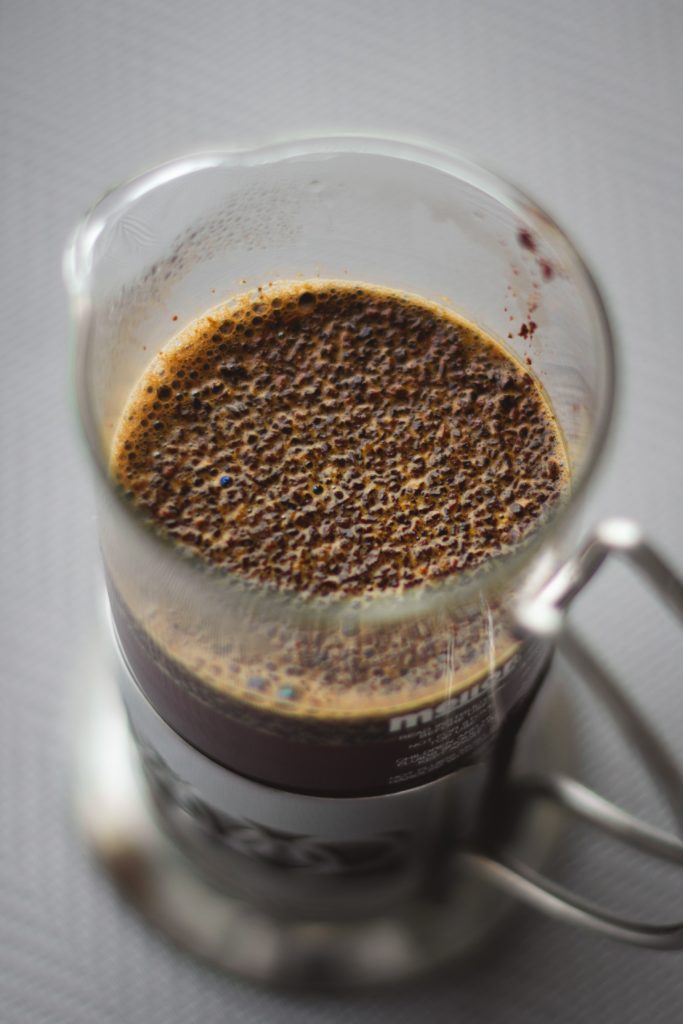
Finding the Right French Press Ratio
Measuring the Amount of Coffee
There’s some flexibility with the coffee-to-water ratio. Do you like your coffee strong or a little weaker? Want to bounce your head to the internal band or just a slight pick-me-up? The French press ratio you use will determine the rest of your day.
Conversions: We realize that not everyone likes to nerd out in the same ways. Some like to relive chemistry glass or their days dealing drugs and have a kitchen scale available. If so, your best cup of coffee can be replicable as your accurate measures will lead to consistent brewing.
If you’re like most people, you (or someone in your household) have a set of measuring spoons in the drawer you can use.
If you’re an eyeballer, you may be able to eventually see the right amount for your ground coffee in each type of French press pot. You’ll still want to figure out the optimal amount and you may want to figure out the least amount necessary so you’re not wasting beans (and money) with no added benefit.
To start, 1 pound of coffee will weigh 454 grams (because a pound of “anything” will weigh 454g).
This should help you visualize a gram because we can all visualize a one-pound bag of coffee, right? But it’s still hard to divide it into almost 500 parts, so that’s where weighing or using a tablespoon can help.
1 Tablespoon (not a teaspoon!) = 5 grams of coffee
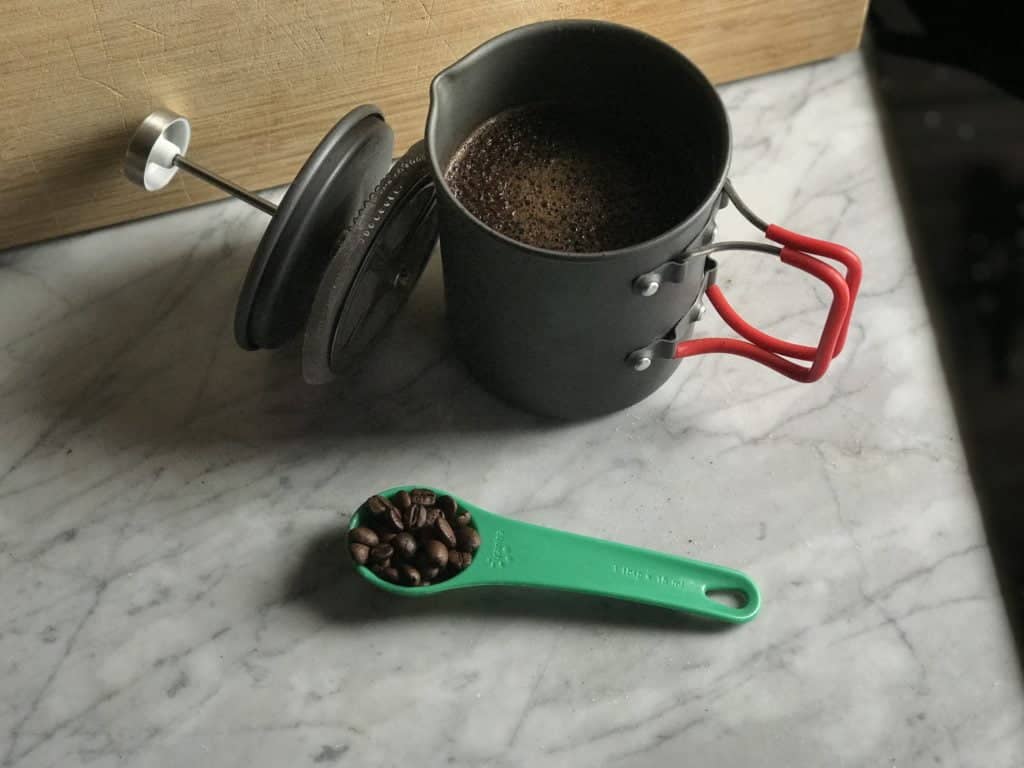
Is that easier to visualize? Can you visualize 90 Tablespoons in your pound of coffee? Probably not.
Our Ideal French Press Ratio
We recommend starting with the following ratios and adjusting them according to your preferences and tastes.
Water
* Fill to just below the nozzle so no ground can pass the plunger when you press the coffee.
3 Cup French Press (12 oz of brewed coffee)
* Coffee: 2 to 3 tablespoons (10g to 15g)
4 Cup French Press (16 oz of brewed coffee)
* Coffee: 4 to 5 tablespoons (20g to 25 g)
8 Cup French Press (32 oz of brewed coffee)
* Coffee: 8 to 10 tablespoons (40g to 50 grams)
Now you can see how much coffee you should use. Personally, I like to make an 8-cup French Press every morning so my wife and I can each obtain our morning buzz.
We both like it strong so let’s say we use 10 tablespoons. According to my math, 50g of coffee per 8 cup french press coffee would mean 1 pound of coffee should last 9 days ( 9 x 50g = 450g).
Step-by-Step Guide to Making a French Press Coffee
- Boil Water.
- Measure Coffee.
- Grind Coffee.
- Place your favorite ground coffee into your glass or steel French press. Make sure it’s clean.
- Let the boiling water stand for a few minutes.
- (If you’re an instrument fanatic, measure your water). If not, pour the hot water evenly, slowly, and in a circular motion over the ground coffee making sure to cover all of the grind evenly. The swirling motion will help the beans make contact with the water and start settling toward the bottom of the pot.
- Stir evenly in a circular motion.
- Let sit for a few minutes.
- Press the plunger to the bottom.
- Serve with a smile.
Frequently Asked Questions (FAQs)
Here are the answers to questions you might still have about the French press:
There are concerns about the French press because of its lack of a fine filter. In this method, organic compounds called diterpenes get into your coffee and while these carry some health benefits, they also raise bad VLDL and LDL cholesterol levels and increase heart disease risk when consumed regularly in high amounts.
However, it’s important to understand that French press coffee does not necessarily pose any immediate health risk unless you drink it excessively. Read more in this article about diterpenes in French press coffee.
Each has its pros and cons. A glass French press breaks more easily but it allows you to see the brewing process more clearly. In contrast, the steel French press isn’t transparent but it’s far more durable. Click here to read a comprehensive comparison of the two.
Conclusion
There you have it, a simplified formula to achieve the ideal cup of joe using the French Press method. With just the right ratio of water and coffee grounds, you’ll be brewing a delicious and eco-friendly coffee in no time. By following our recommended ratios, you can customize your brew according to your preferences. The key is finding that sweet spot where the coffee is strong enough to give you that much-needed pick-me-up but not overpowering.
So why not give it a try yourself? Grab your French Press and some freshly ground coffee beans, and start brewing. You’ll be amazed at how a little attention to detail can transform your morning cup of coffee into something truly extraordinary.

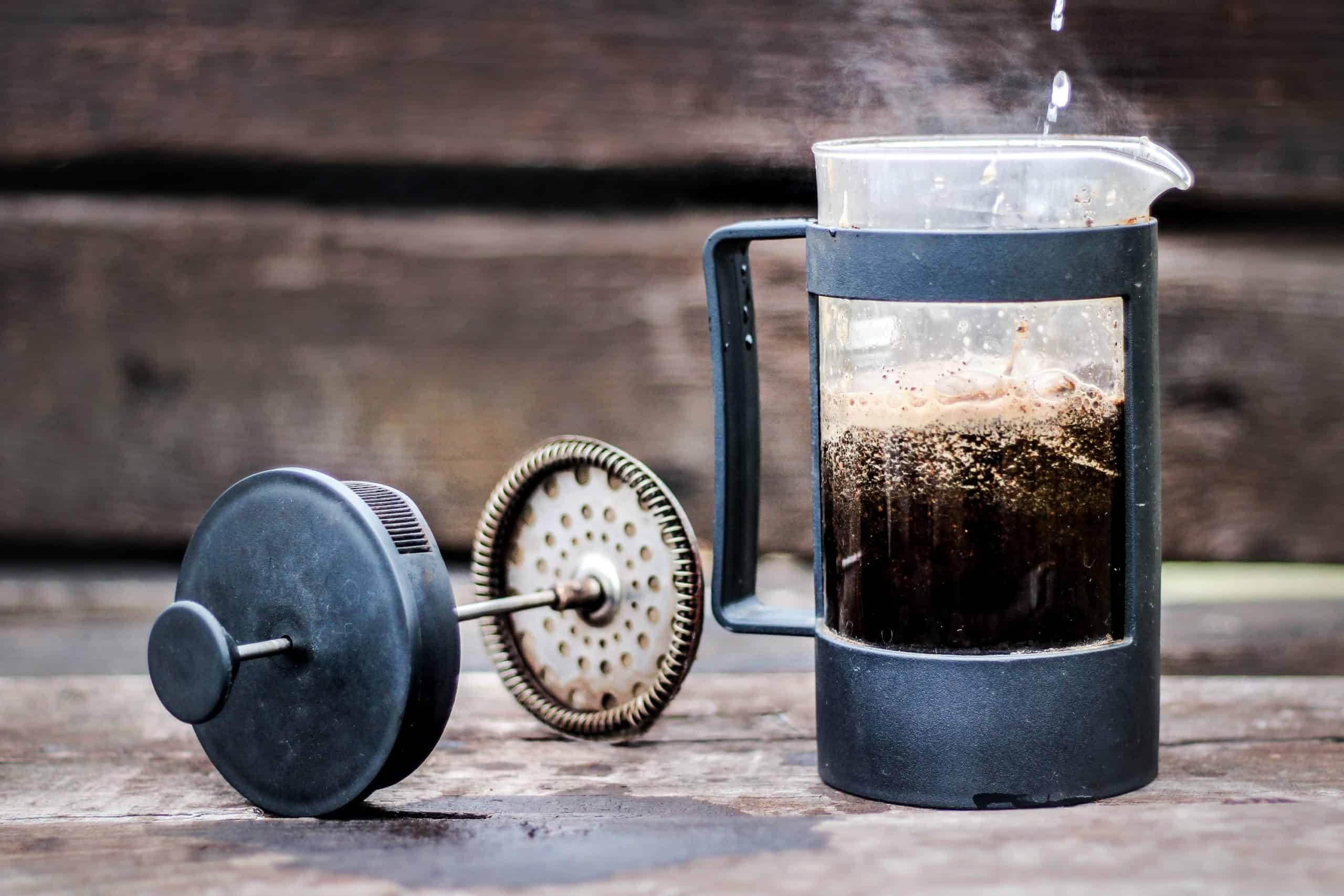


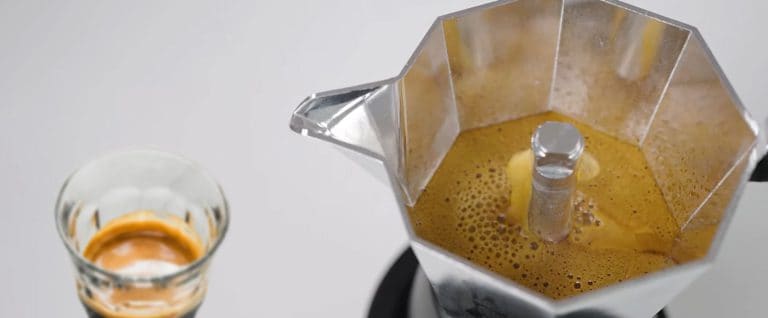
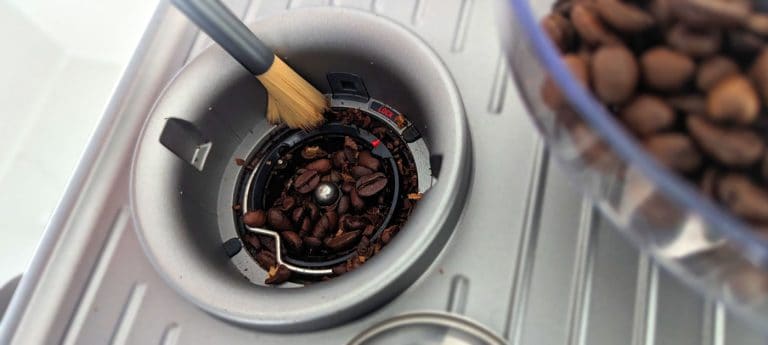
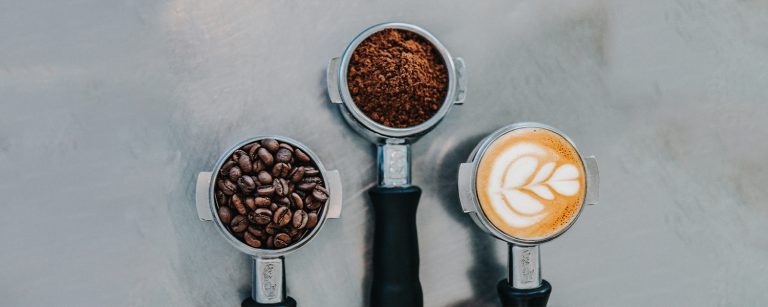
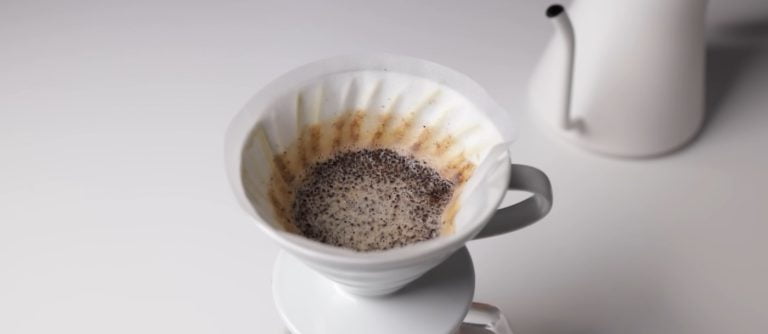
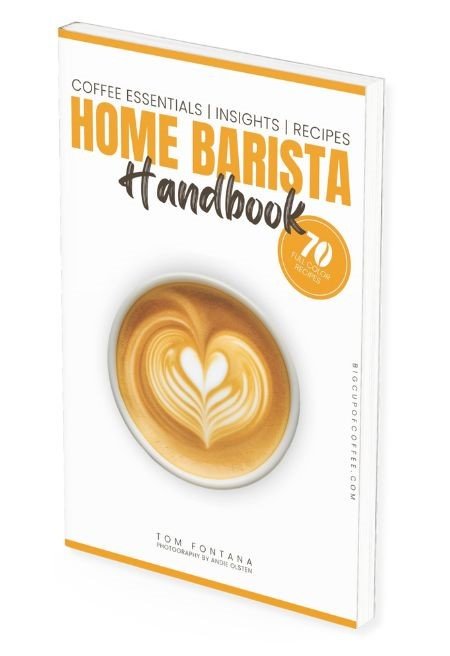
To Emily, i think the roast is more important, and that it’s fresh. Old, stale coffee beans will never be any good. I use a medium roast, and it’s nice to buy different varieties from different locations.
I was so glad to read Tom’s note on cup sizes because I was really confused initially. I always ended up making too much coffee. But now, thanks to this guide, I’m no longer wasting precious beans and my morning coffee ritual is much improved.
I’ve used an insulated and non-insulated French press, and this article confirms my experience. Insulated ones really do keep it warmer for longer, but I’ve found that I enjoy my coffee more from a glass press. It’s a personal preference, though. Curious to hear othersopinions?
Just tried the ideal French Press Ratiofrom the guide for my 4-cup Secura press, and I’m impressed. The flavor was spot-on. It’s great to finally nail the taste I’ve been aiming for. Does anyone have a particular coffee bean brand they recommend for an even better taste?
After reading this article, I went and bought the Mueller French Press Tom recommended. Can confirm it keeps the coffee warm much longer. Although, I’m curious if anyone has tried this method with a non-insulated press and noticed a significant difference in warmth retention?
I’m having some trouble with the grind size. Could you clarify what coarsely groundreally means? I’m using pre-ground coffee, and I fear the granules might not be coarse enough. Any tips on how to choose the right pre-ground coffee for a French press?
Yeah, pre-ground coffee is not ground coarse, more like medium. To properly use a french press, you need to get your own grinder, where you can adjust the grind setting. It’ll be a huge upgrade for your coffee, freshly ground beans are 10x better than pre-ground.
I’m so grateful for this article. I’ve been struggling with my French press ratios and always ended up with coffee that was too strong or too weak, but now my mornings are absolutely perfect with a cup of coffee that’s just right. It’s best to use a scale, not just a spoon. That was my problem.
helpful, but I’m still a bit confused about the cup sizes. Can anyone explain how the 12 oz from a 3 cupFrench press translates if I’m used to consuming a 10 oz mug? Will I basically get one full mug from a 3 cup press?
I experimented with the French press ratios and adjusted them slightly to fit my taste. Turns out a bit more coffee made it heavenly for me. Anyone else like their coffee on the stronger side? Curious to know how much coffee you add for that extra kick.
I’ve nmoticed that a good rule of thumb is that your grind should resemble sea salt, which allows the water to properly saturate the grounds during brewing.